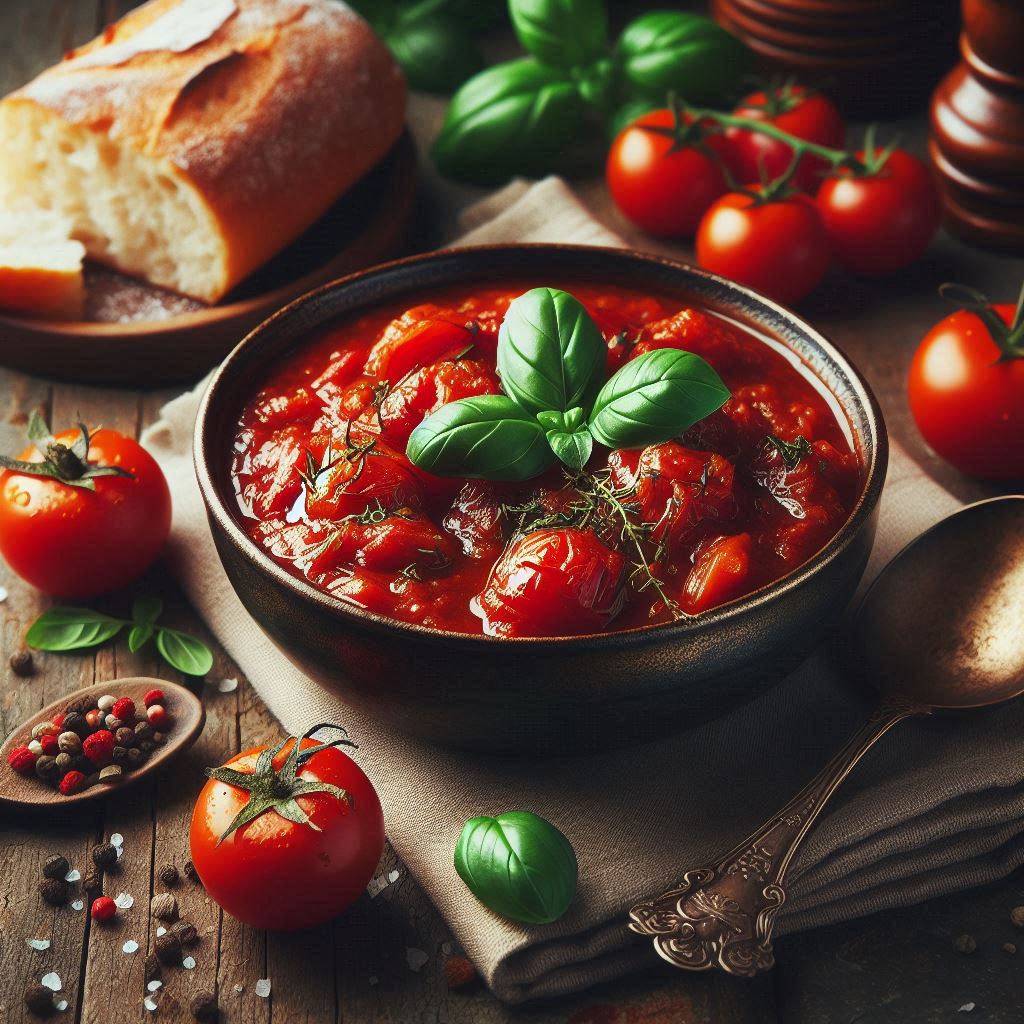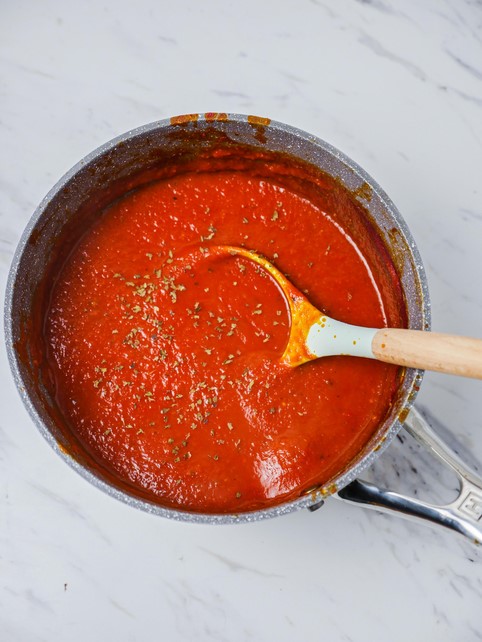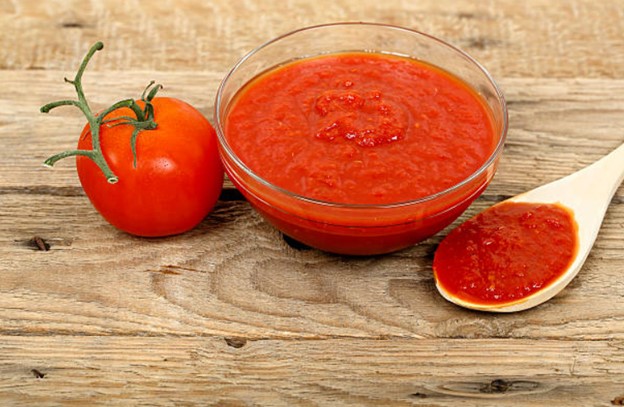There’s something magical about making your own spaghetti sauce from scratch—especially when it’s crafted from fresh, sun-ripened tomatoes.
This isn’t just a recipe. it’s a celebration of simple ingredients, timeless flavors, and slow cooking that transforms the ordinary into something unforgettable.
Store-bought sauces may be convenient, but nothing compares to the rich aroma and authentic taste of homemade sauce simmering on your stove.
Whether you’re using a garden harvest or market-fresh produce, this guide will walk you through every step—from peeling tomatoes to simmering them into a luscious, hearty sauce.
Let’s dive in.
Ingredients You’ll Need

Before you begin cooking, it’s important to gather everything you’ll need for this homemade spaghetti sauce.
The beauty of this recipe lies in its simplicity—just a handful of fresh, wholesome ingredients come together to create a rich and flavorful sauce.
Use the freshest tomatoes you can find, and don’t be afraid to adjust the seasonings to suit your taste. Here’s what you’ll need for about 4 servings:
For about 4 servings
- 3 lbs fresh ripe tomatoes – Roma or plum tomatoes are ideal
- 2 tbsp olive oil
- 1 medium onion, finely chopped
- 4 cloves garlic, minced
- 1 tsp salt – adjust to taste
- 1 tsp sugar (optional, to balance acidity)
- 1 tsp dried oregano
- 1 tsp dried basil or a few fresh basil leaves
- 1/4 tsp black pepper
- 1 tbsp tomato paste (optional, for added depth)
- Red pepper flakes (optional, for a touch of heat)
1. Blanch and Peel the Tomatoes

Tomato skins don’t break down well during cooking and can leave a chewy texture in an otherwise smooth sauce. Blanching makes it easy to peel the skins off and create a velvety base.
How to do it
- Bring a large pot of water to a boil.
- Score a small “X” on the bottom of each tomato with a knife.
- Drop the tomatoes into the boiling water for 30–60 seconds until the skins start to loosen.
- Transfer them immediately into a bowl of ice water to stop the cooking.
- Once cool, peel off and discard the skins.
2. Core and Chop the Tomatoes

Removing the core (the tough, stem end) and chopping the tomatoes allows them to cook evenly and blend better into the sauce. You’ll have more control over texture and moisture.
How to do it
- Slice out the tough core from each peeled tomato.
- Roughly chop the tomatoes into chunks. Don’t worry about precision—they’ll cook down.
- Optional- Scoop out some seeds if you want a thicker sauce, but they are edible and not harmful.
3. Sauté the Aromatics

Onions and garlic are the foundation of any great sauce. Slowly cooking them in olive oil draws out their natural sweetness and infuses the sauce with flavor from the very beginning.
How to do it
- Heat olive oil in a large saucepan over medium heat.
- Add the chopped onions and sauté for 5–7 minutes until translucent and tender.
- Stir in the minced garlic and cook for another minute, being careful not to burn it.
4. Add Tomatoes and Simmer

This is where everything comes together. Simmering gently breaks the tomatoes down, concentrates their flavor, and marries them with the aromatics and herbs for a deep, savory sauce.
How to do it
- Add the chopped tomatoes to the saucepan.
- Stir in salt, pepper, oregano, basil, and sugar (if needed).
- If using tomato paste, add it now to deepen the flavor and thicken the sauce.
- Bring to a gentle boil, then reduce the heat and let it simmer uncovered for 45–60 minutes, stirring occasionally.
- As it cooks, the sauce will reduce and intensify in flavor.
5. Blend for Smoothness (Optional)

If you prefer a smooth, restaurant-style sauce, blending is your friend. It’s entirely optional—some love it chunky and rustic, others silky and smooth.
How to do it
- Use an immersion blender right in the pot to blend the sauce to your desired consistency.
- Or, let the sauce cool slightly and blend in batches using a standard blender.
- Always taste after blending—you may want to adjust the seasoning.
6. Taste and Final Adjustments

Tasting ensures the sauce is perfectly balanced. Every batch of tomatoes is different—some are sweeter, others more acidic. This step lets you fine-tune your masterpiece.
How to do it
- Taste the sauce and adjust salt, herbs, or sweetness.
- If it’s too tangy, add a pinch more sugar.
- For extra freshness, stir in a few chopped basil leaves right before serving.
Serving Ideas
Now that your sauce is ready, here are some delicious ways to use it:
- Toss with spaghetti, linguine, or penne for a classic meal.
- Use it as a base for lasagna or baked ziti.
- Add meatballs, grilled eggplant, or sautéed mushrooms for extra substance.
- Freeze in airtight containers for easy weeknight dinners (lasts up to 3 months).
Wrapping Up
Making spaghetti sauce with fresh tomatoes may take a little more time, but the result is pure, comforting joy.
It’s a recipe that brings people together, fills your kitchen with warmth, and honors the tradition of slow, intentional cooking. Once you try it, you may never go back to the jarred kind again.
Leave a Reply